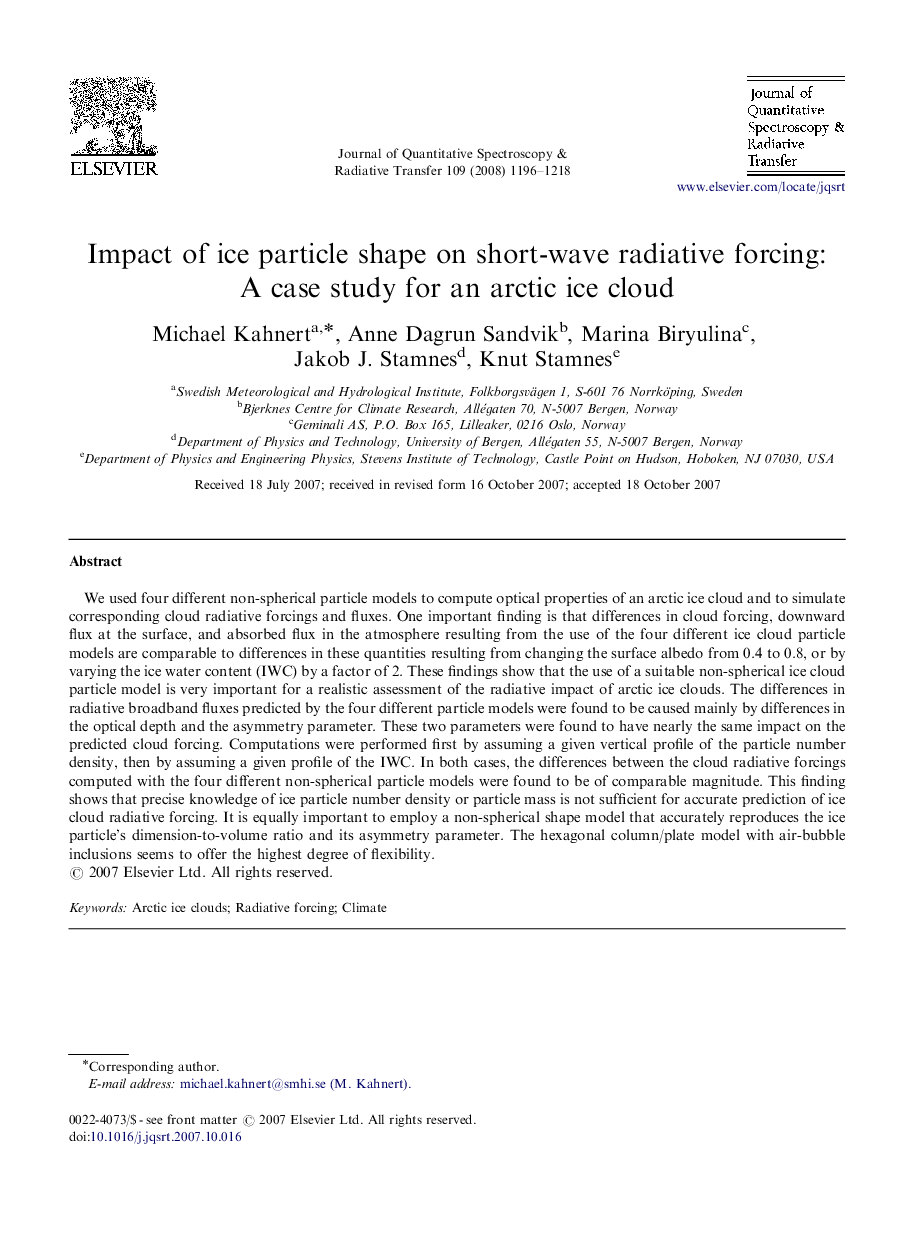| کد مقاله | کد نشریه | سال انتشار | مقاله انگلیسی | نسخه تمام متن |
|---|---|---|---|---|
| 5430486 | 1397406 | 2008 | 23 صفحه PDF | دانلود رایگان |

We used four different non-spherical particle models to compute optical properties of an arctic ice cloud and to simulate corresponding cloud radiative forcings and fluxes. One important finding is that differences in cloud forcing, downward flux at the surface, and absorbed flux in the atmosphere resulting from the use of the four different ice cloud particle models are comparable to differences in these quantities resulting from changing the surface albedo from 0.4 to 0.8, or by varying the ice water content (IWC) by a factor of 2. These findings show that the use of a suitable non-spherical ice cloud particle model is very important for a realistic assessment of the radiative impact of arctic ice clouds. The differences in radiative broadband fluxes predicted by the four different particle models were found to be caused mainly by differences in the optical depth and the asymmetry parameter. These two parameters were found to have nearly the same impact on the predicted cloud forcing. Computations were performed first by assuming a given vertical profile of the particle number density, then by assuming a given profile of the IWC. In both cases, the differences between the cloud radiative forcings computed with the four different non-spherical particle models were found to be of comparable magnitude. This finding shows that precise knowledge of ice particle number density or particle mass is not sufficient for accurate prediction of ice cloud radiative forcing. It is equally important to employ a non-spherical shape model that accurately reproduces the ice particle's dimension-to-volume ratio and its asymmetry parameter. The hexagonal column/plate model with air-bubble inclusions seems to offer the highest degree of flexibility.
Journal: Journal of Quantitative Spectroscopy and Radiative Transfer - Volume 109, Issue 7, May 2008, Pages 1196-1218